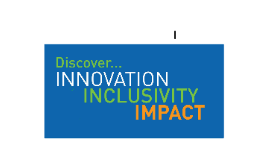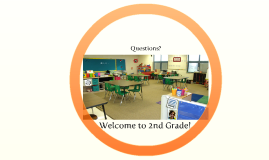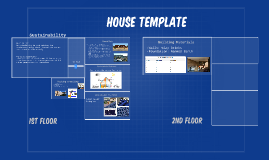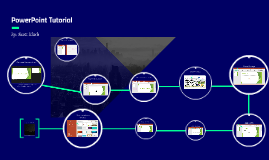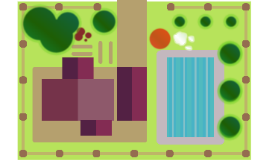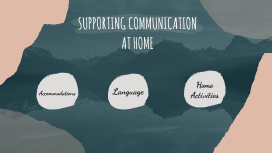House Template
Transcript: House Template Q&A and Discussion Exploring Connections and Room Designs Encouraging open dialogue allows for the exchange of ideas and feedback on house design preferences and experiences. Engaging the audience can yield valuable insights, enhancing the contextual understanding of design application in real homes. Conclusion Future Directions in House Design This section synthesizes all critical insights from the presentation, focusing on the house's layout and design elements, emphasizing the importance of connectivity between spaces. Emerging trends in house design emphasize sustainable materials, smart technology integration, and multifunctional spaces tailored for modern living. Designers are increasingly focused on creating adaptable environments that foster well-being and efficient use of space. Connecting Passages Recap of Key Concepts Flow of Movement Hallways and Corridors The house template showcased essential elements such as exterior design, entryway significance, and the functionally designed connecting passages that influence overall flow. Understanding these components is vital in achieving harmonious living spaces that meet functional needs and aesthetics. Connecting passages are essential to the functionality and aesthetic flow of a house, linking various rooms while enhancing spatial dynamics. Understanding their design fosters improved movement and accessibility throughout the home. Hallways and corridors serve as the arteries of a home, guiding inhabitants through the various living spaces. Their design should consider width, lighting, and materials to ensure comfort and accessibility while making a visual impact on the overall aesthetic of the home. The flow of movement is crucial for fostering a harmonious experience within a home. Well-designed connecting passages facilitate seamless transitions between spaces, promoting usability and enhancing the overall living experience by reducing bottlenecks and ensuring ease of access. Functional Design of Passages Importance of Layout Design Functional design of passages focuses on optimizing the space for practical use while reflecting the home's character. Considerations such as storage solutions along corridors, appropriate lighting, and traffic patterns greatly influence the overall livability and aesthetic appeal of the home. Effective layout design maximizes space utilization, influences movement patterns, and enhances aesthetics. A thoughtful arrangement of rooms contributes significantly to a home's overall functionality. Overview of Presentation Structure Purpose of the House Template The presentation will cover five main sections: introduction, main structure, connecting passages, room designs, and conclusion. Each section will address specific aspects of house templates and design implications. The house template serves as a blueprint for creating efficient living spaces. It establishes guidelines for layout, ensuring that spaces are functional and meet the needs of inhabitants. Bathroom Essentials Bathroom design emphasizes both functionality and tranquility, incorporating essential fixtures such as sinks, toilets, and showers. Layout considerations should include privacy, space efficiency, and aesthetics, with popular choices being modern vanities and spacious showers. Bedroom Configurations Bedroom design focuses on comfort and relaxation, with layouts typically prioritizing bed placement relative to windows for natural light. Considerations include closet space, furniture layout, and personal touches to create an inviting environment conducive to rest. Exterior Design Features The exterior of a house plays a pivotal role in first impressions, combining function with style. Key elements include roof design, facade finishes, and window placements that contribute to both visual appeal and environmental efficiency. Examples of modern designs often integrate sustainable materials to enhance energy conservation. Kitchen Arrangement Introduction Room Designs Main Structure An efficient kitchen arrangement incorporates the work triangle concept, optimizing the relationship between the sink, stove, and refrigerator. Layouts can vary from U-shaped to L-shaped, each offering distinct advantages for workflow and accessibility, crucial for culinary activities. Room design plays a crucial role in enhancing functionality and aesthetics within a house, creating spaces that are both practical and inviting. Each area requires specific considerations to optimize layout, flow, and utility. This section outlines the significance of house templates in designing effective living spaces. A well-structured layout enhances usability and aesthetic appeal, providing a foundation for functional and beautiful interior designs. Living Room Layout Doorway and Entryway Concepts This section focuses on the essential elements of a house's main structure, emphasizing exterior design, entryway significance, and material choices that enhance aesthetics and






